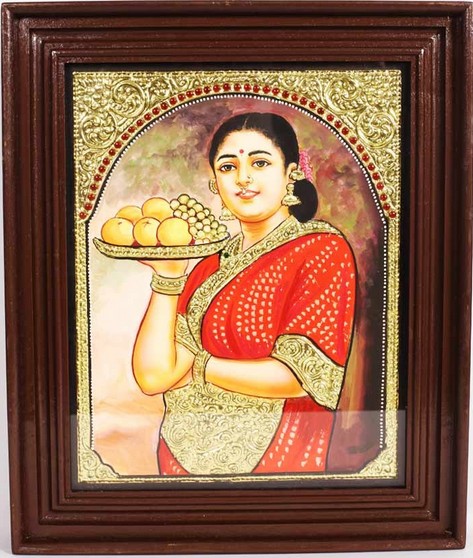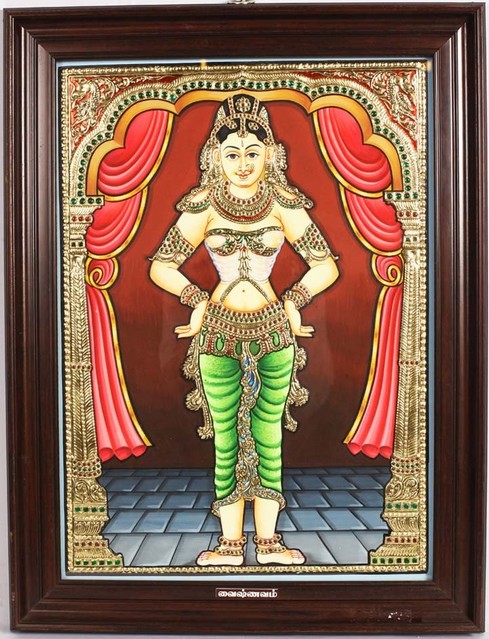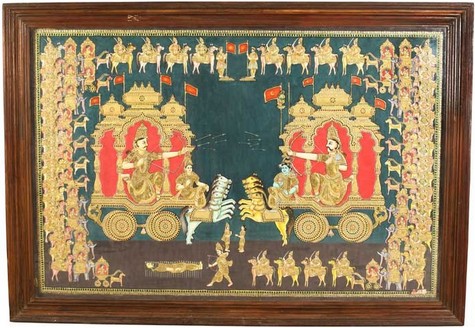The Thanjavur painting is very different from the conventional picture that comes to your mind when you think of paintings. It is unique and breathtakingly beautiful in its concept. The vibrant colours, dense composition, and surface richness distinguish them from other kind of paintings. Just as the name, these paintings predominantly belong to the town of Thanjavur or Tanjore as it is called.
The Thanjavur painting originated in the Maratha courts of Thanjavur in the 16th to 17th century. The Chola rulers were great patrons of art. Raghunatha Nayaka set up the school of Thanjavur artists, where the Thanjavur paintings evolved. The paintings were patronised by the Maratha princes, Nayakas, Rajus communities of Tanjore and Trichy and Naidus of Madurai. The Thanjavur paintings at this time depicted the deities, rulers, and nobility of the community. They came in various sizes depending on the need of the patron. They were used to adorn the walls of the palaces. The paintings during that time were rooted in traditions and innovations were not encouraged. Very few paintings of the period exists today.
When the Maratha rule ended, the trading Chettiar community continued the patronage of the Thanjavur artists. They were staunch Shaivates, therefore encouraged Shaivite themes in the paintings.
The Thanjavur paintings have always involved dedicated labour. Usually the paintings depict god and goddesses. The figures in the paintings were quite large and rounded and, the faces cherubic and chubby.
The twentieth century saw more experimentation in the Thanjavur paintings. The figures became more propionate and one could also see birds, animals and flowers in the painting which were not present in the earlier Thanjavur paintings. Much of these painting could be seen in the various temples being constructed at the time.
Semi-precious stones, pearls, glass pieces, and wafer thin sheets of gold were used for adorning these paintings. This gave them a three dimensional effect and a unique touch. Earlier the paintings were done on wooden planks. Much detailing and meticulous care gave the painting style its breath-taking character.






